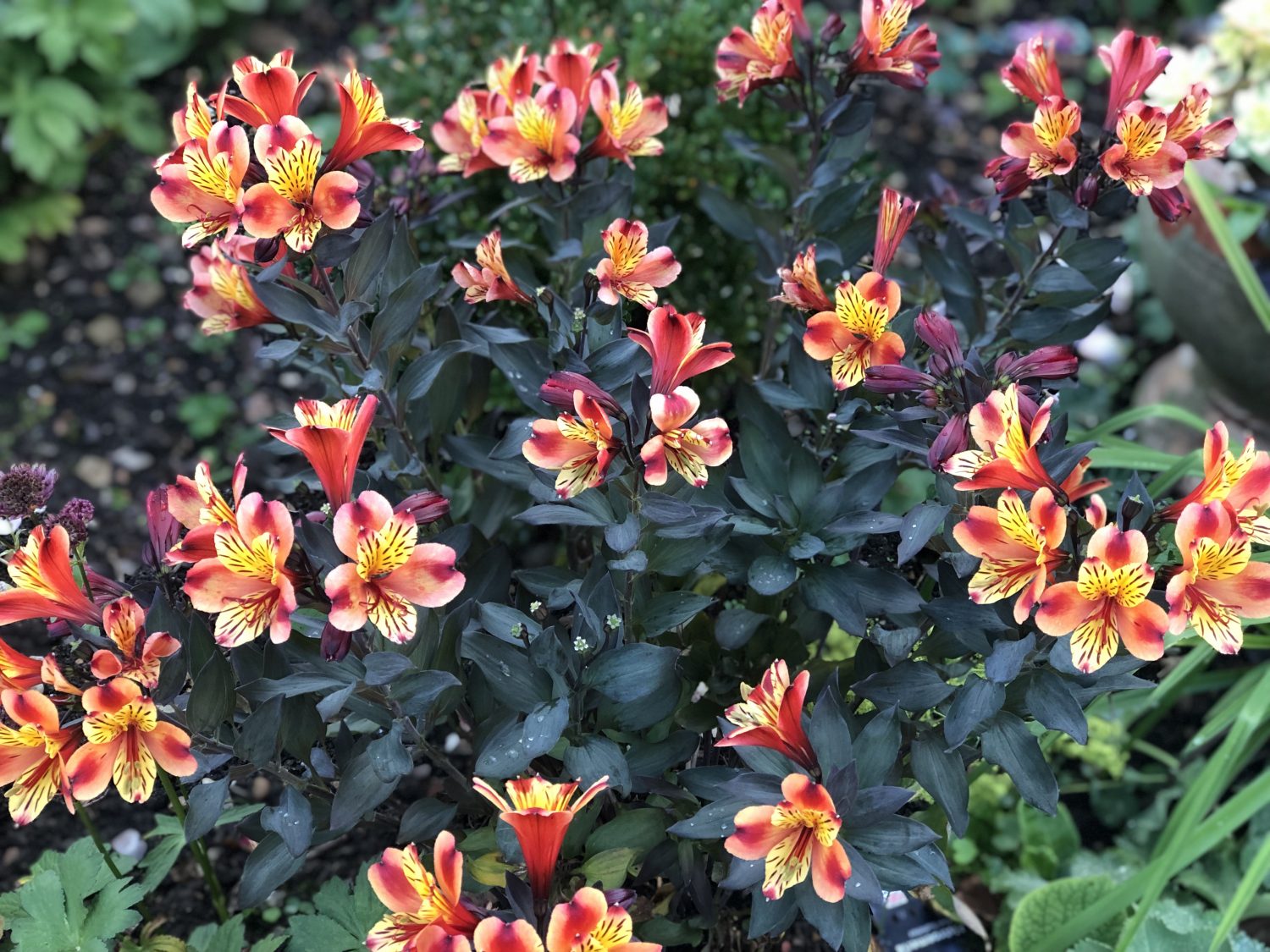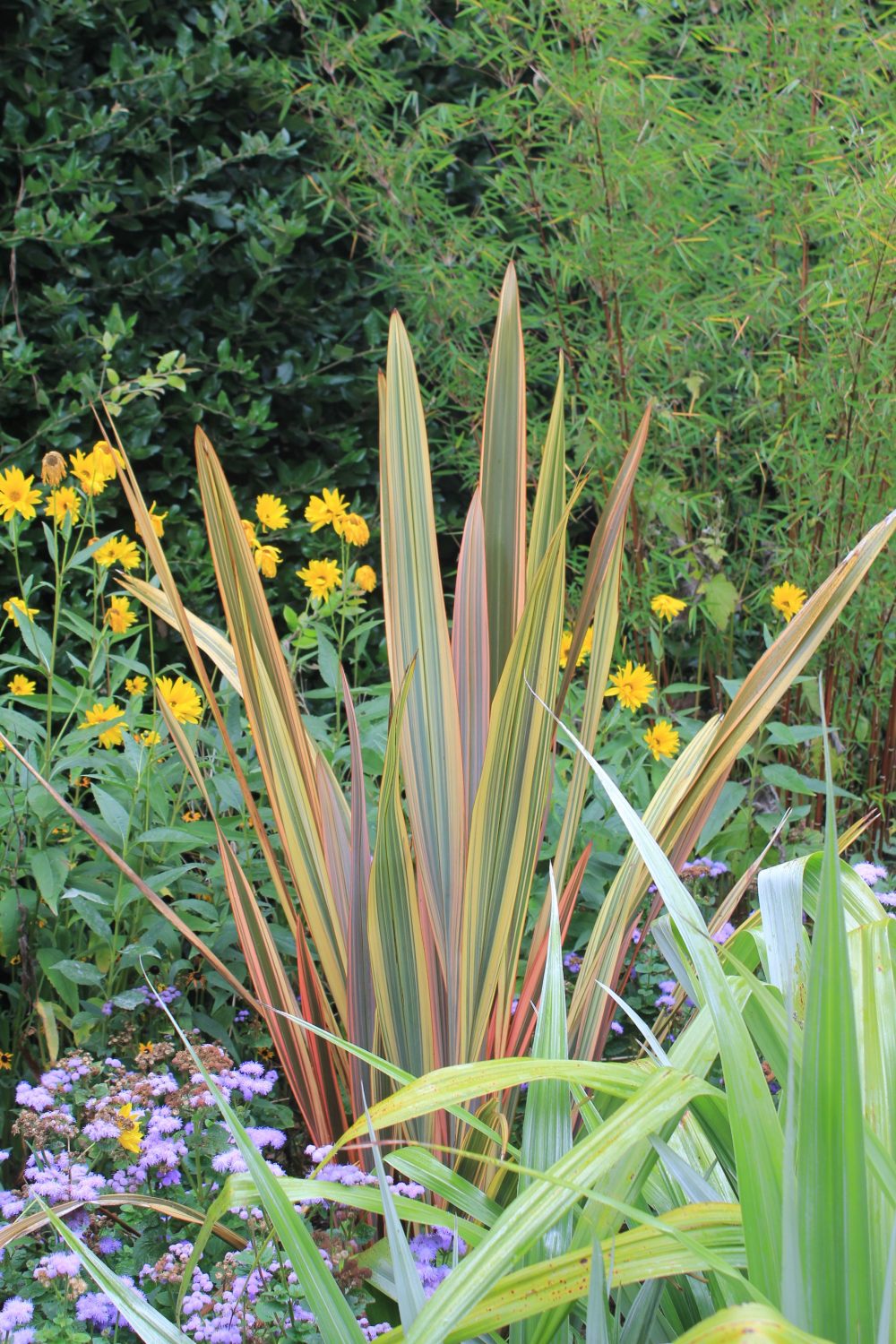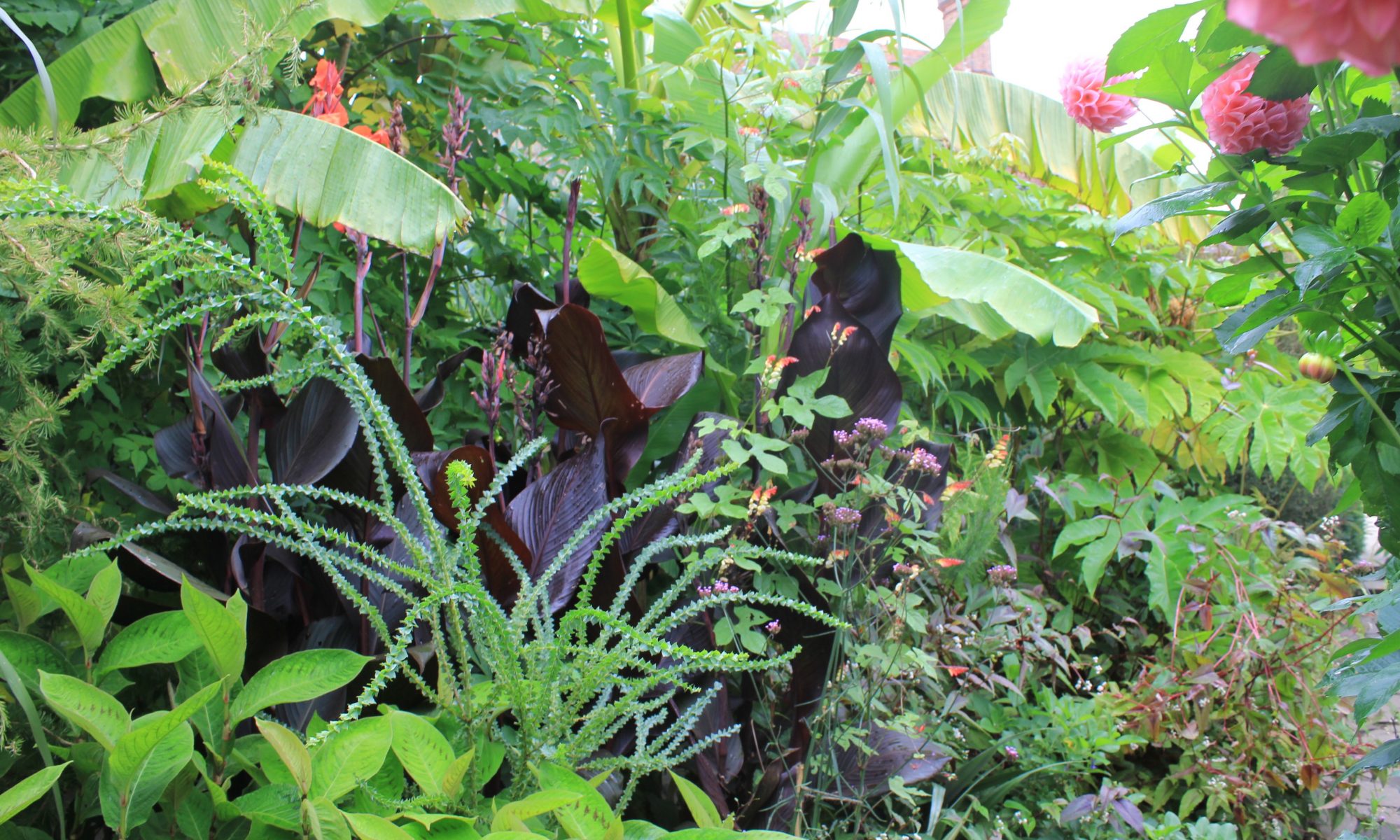Work with nature to create a lush oasis in our unpredictable climate, as Jo Arnell explains
Making a tropical garden or border means choosing plants that will give the impression of the humid tropics – a lush-leaved oasis dripping with ferns, bananas and exotic blooms. Looking around as I write this, I’m finding it hard to imagine such a place in my drought ravaged borders. Jungly plants need lots of water in order to stay in tip top shape – something they make clear from the size and floppiness of their leaves – me, save water? If the weather stays dry and you are determined to create a lush looking space – and the thought of that is almost too enticing – you might need to create a micro microclimate and find a few large leaved tropical-looking plants that will manage in a parched patch. Luckily there are some, but even these will need some rain in order to thrive.
The Bare Necessities
An enclosed area – any small space surrounded by walls or fences – will help to trap moisture, especially if there’s a canopy of leaves above and plenty of ground cover plants below.
A jungle is similar to a forest, so try to find plants that will occupy different layers. Most of our houseplants come from the shady tropical places, which is why they can live in the relative gloom of our interiors, and why they don’t much like the drying effects of central heating.
A pergola covered in vines and scented plants will create instant height. Climbers will grow relatively quickly up supports to help enclose a seating area, hide a shed, or screen off a section of the garden. Use exotic looking Campsis radicans, Passiflora, or scented climbers like Jasmine – evergreen Trachelospermum will give you the best of both worlds with jasmine-like flowers and dark, glossy evergreen foliage, often tinged with pink in the winter. Annual climbers like Cobaea scandens, Ipomoea (Morning Glory and also Spanish Flag) and Thunbergia (Black-eyed Susan) will scamper up supports in no time at all and provide masses of exotic looking flowers all summer long. These are tender annuals, so won’t survive through the winter, but will do more in one season than many longer lived plants manage in their whole lives.
Create the feeling of rain in your forest with a water feature. The sight and sound of water is evocative and refreshing – and can be relatively easy to install. You just need a sump to hold the water and a pump (if there’s enough light, solar powered). It’s the illusion of a water source that will help to create the atmosphere, even if it is emanating from a washing up bowl.

Canopy Plants
The use of vertical planting to give height will create a more intimate atmosphere, increase humidity and define the space. Choose fast growing canopy plants – and the great thing about big leaved, soft-stemmed trees and tree-sized herbaceous perennials, is that they tend to grow quickly – racing upwards and spreading out to claim their share of the sunlight. There are masses to choose from, but, as with specimen trees and shrubs in a traditional garden, there may only be room for one or two impact plants – so don’t go bananas.
There are plenty of exotic looking, (but hardy) woody trees that will look the part. For big leaves there’s evergreen Magnolia grandiflora, which also has enormous, pale cream scented flowers, Almost evergreen is Tetrapanax ‘Rex’ – or rice paper tree. With its enormous palmate leaves it looks very exotic, but is usually fairly hardy. Catalpa bignonioides, the Indian bean tree, will grow enormous left to its own devices, but looks spectacular when cut hard back each year, as this makes the leaves even bigger, while dwarfing the tree. Palms are impressive and many are hardy in a sheltered situation. Or you could try a Fig tree, which in a good year, will also bring luscious fruit.
Mid-sized leaves can be just as exotic looking – Ginko biloba has really unusual fan shaped leaves that turn a wonderful deep butter yellow colour in the autumn. It is an ancient plant that’s been around since the time of the dinosaurs and is a bit slow growing, but makes up for that by being low maintenance and pest free.
Mid Layer
From head height down to just above the knee, the mid layer in a tropical scheme will have to work hard – foliage will be mainly green, often dark, packed with chlorophyl and glossy, to make the most of the dappled light under the canopy. Sword-like leaves are useful here to punctuate and contrast – colourful Phormiums work well, Cordylines will do a similar job, but will eventually grow very tall. Euphorbia mellifera or Honey spurge, looks exotic, with honey scented flowering bracts in spring. It can get quite large, but is easy to prune and keep to scale – just watch out for the irritant sap that all Euphorbias have and wear gloves/long sleeves when cutting back. Another plant that smells of honey is Melianthus major. It is a bit sprawly – but in a gentle jungle way and has beautiful, glaucous leaves, softly serrated, the greeny-blue colour makes a lovely contrast with other foliage. Melianthus will need a sunnier spot than some of the darker leaved and will be cut back, but rarely killed, by the frost.
Exotic Blooms
Tender, fabulous, but worth it, tuberous perennials like Cannas, Dahlias and Agapanthus will provide gorgeous flowers from early summer until the frosts. They have jungly foliage too – in contrasting shape and form – Cannas unfurl to look like mini banana plants, Agapanthus leaves are arching and strappy, Dahlias are lush and leafy.
Lilies are great for providing a splash of splendid colour without taking up much room, These do like a bit of sun, it’s true, but Fuchsias, Begonias and tender perennials like Impatiens (Busy Lizzies) will thrive in the shade of other plants. Frost tender annuals like Zinnia, Tithonia and scented Nicotioana (tobacco plants) will bring pops of colour all summer long – and all for the price of a packet of seeds. Plant them out once the danger of frost is over – and use them to fill gaps in the border or plant in pots to group together in a display.

Ground Cover
Creeping along the floor of a jungle will be the most tenacious of the plants, able to exist in the deepest shade in and among their taller neighbours. These plants will be able to manage with less of everything and will make a green carpet that will also smother any non-exotic weeds that might try to infiltrate the scheme. Lysimachia (creeping Jenny) is a useful scrambler in damp shade, Bergenia (Elephants ears) has huge weed-smothering leathery leaves and spring flowers, Pachysandra has smaller palmate leaves and is great beneath trees and shrubs, Euphorbia Purpurea’s dark leaves and lime green bracts will provide contrast. And then there is a host of delicate looking ferns that will bring a little air and light to the understorey.
Winter
Tropical gardens don’t look their best in the winter, let’s be honest. If you have enough space to close off your exotic space or divert attention elsewhere once the frosts arrive, you can plant with abandon and then make sure that the most tender have an over-wintering space while you wrap up the rest. If this is an area that you look at out of your window all year round, then you will have to plan carefully to stop it looking depressing and bare in the winter. Perhaps stick to evergreens, hardier plants and then add in some bulbs to cheer it up in the spring. Provide continuity of interest through the seasons, while still making room for the blast of tropical colour and leaf in the summer months.
Water
There’s no getting away from it – true jungle plants will need water – and lots of it, something that not many of us have the luxury of through the summer, unless we have been very careful and set up lots of rainwater storage. Luckily, as discussed above, there are a few sensible, large-leaved, exotic looking shrubs and perennials that are able to withstand periods of dry weather, will thrive in dry shade and aren’t bothered too much by pests and diseases. Hooray!
Top of my list would probably be Fatsia japonica, with its huge shiny dark green leaves and unusual looking, creamy flowers in the autumn. It is a real gem and will provide structure and presence in any shady or semi-shaded place.
Viburnum davidii is another of these undemanding, but large-leaved glossy evergreens, fitting perfectly into the mid-layer of a scheme and muddling along through the seasons, sporadically flowering with slightly scented white flowers, followed by weird looking metallic blue/black berries that last a long time on the plant – because they are too suspicious looking to eat. Their leaves have a leathery, almost waxy feel, which, together with fewer stomata (tiny holes on the underside of the leaves that let gasses and water vapour through) is how they slow down water loss.
Other plants that shouldn’t need too much water, once they are established are Maclaya (Plume poppy), that will thread its way through other plants, Heucheras, Euopnymus, ivy and some ferns will be fine in dry shade. Crocosmia, Agapanthus, Hemerocallis (Daylillies), Choisya (Mexican Orange) and Cotinus while accepting, will flower better in the light.
Join Jo for a Border Design course at her garden in Woodchurch hornbrookmanor.co.uk
You may also like
In the Night Garden
Jo Arnell explains how to make the most of your outdoor space once darkness falls Some enchanted evening you may see me outside – mainly searching for slugs in the garden, because the cool hours of night are when they...
Contain your excitement
Jen Stuart-Smith discusses how to get creative with your pots and planters My love affair with plants started with houseplants when I was a child. As my bedroom windowsill overflowed – resulting, occasionally, in waking up with compost under my...
More than just a pretty face
Jen Stuart-Smith explores the multiple uses of some easy-to-grow garden favourites When you grow flowers for their beauty, shape and colour it can be easy to forget all the other qualities they have to offer. Some are edible, others provide...










